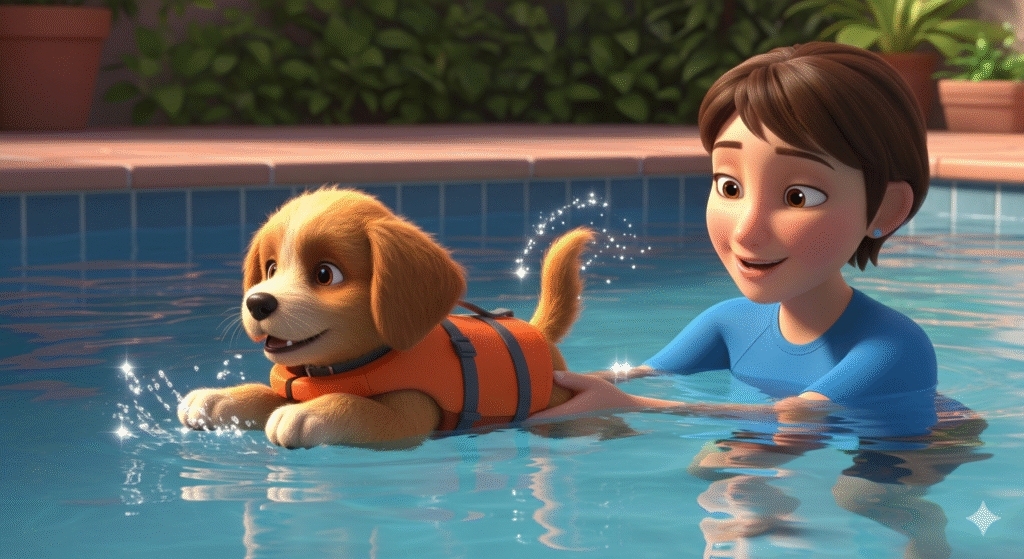
Introducing your puppy to swimming can be a fun and rewarding experience, but it’s important to take safety precautions to ensure your furry friend stays happy and healthy. Whether you’re planning to visit a local pool, lake, or even use a small backyard dog pool, following some basic guidelines will make swimming enjoyable for your puppy while keeping risks to a minimum.
Start Slowly and Use Positive Reinforcement
When introducing your puppy to water for the first time, it’s important to go slow. Begin with shallow areas where your puppy can stand comfortably. Encourage your puppy with treats and praise for approaching the water. Positive reinforcement helps your puppy associate swimming with fun experiences rather than fear.
Use a Puppy Life Jacket
Even if your puppy is comfortable with water, a life jacket provides extra safety. Look for a snug, adjustable life jacket designed specifically for small dogs or puppies. Life jackets offer buoyancy, making it easier for your puppy to stay afloat while building confidence in the water.
Supervise at All Times
Never leave your puppy unattended in or near water. Puppies can tire quickly or panic in unfamiliar surroundings. Keeping a close eye ensures you can react quickly if your puppy struggles or needs assistance. A leash or tether can also help maintain control during the initial swimming sessions.
Choose Safe Water Locations
Select swimming areas that are safe for puppies. Avoid strong currents, deep water, and bodies of water with harmful algae or chemicals. If using a backyard pool, ensure the water is clean, and provide a shallow entry point for easy access. Freshwater lakes, dog-friendly beaches, and calm ponds are ideal for puppy swimming.
Keep Sessions Short
Puppies have limited stamina, so keep swimming sessions brief, especially at first. Start with a few minutes and gradually increase the time as your puppy becomes more confident. Watch for signs of fatigue, shivering, or stress, and allow plenty of breaks to rest and hydrate.
Rinse and Dry Your Puppy After Swimming
After swimming, rinse your puppy thoroughly with fresh water to remove chlorine, salt, or debris. Dry your puppy gently with a towel, paying attention to the ears to prevent infections. Regular grooming after swimming helps maintain a healthy coat and skin.
Make Swimming Fun and Consistent
Frequent, positive experiences help your puppy build confidence in the water. Use toys, floating balls, and gentle encouragement to make swimming sessions enjoyable. Consistency helps your puppy develop swimming skills safely and makes future water activities more fun for both of you.
Swimming can be a fantastic bonding experience for you and your puppy when done safely. By starting slowly, using proper safety equipment, and choosing safe locations, you can introduce your puppy to the joys of swimming while ensuring their health and happiness. Remember, patience and positive reinforcement are key to making your puppy a confident little swimmer.
